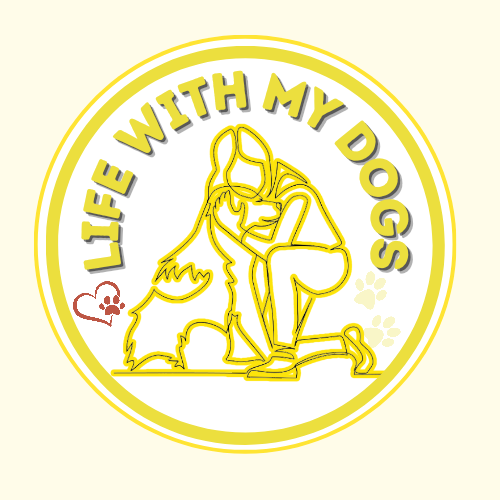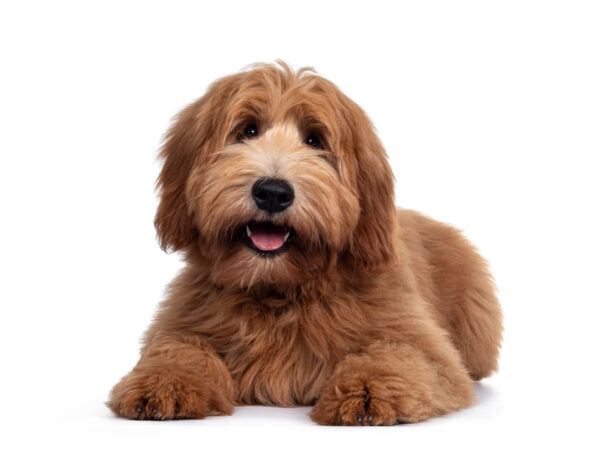LifeWithMyDogs is supported by our audience. When you purchase through one of our links, we may earn a small affiliate commission. As an Amazon Associate I earn from qualifying purchases. Your cost is not affected.
**********
Introducing a new dog into my home has always been an exciting yet carefully planned experience. I’ve learned that while the joy of welcoming a furry friend is unmatched, creating a smooth transition is essential to help them feel safe and loved. Each dog has a unique personality, and adjusting to a new environment can be overwhelming. That’s why I’ve developed a step-by-step approach to make the process as stress-free as possible for everyone involved.
From preparing my home to introducing the new dog to my other pets, every step has taught me something valuable. I’ve discovered practical tips and strategies that have made each transition smoother and deeply rewarding. Let me share my experience with you so that you can feel confident and prepared as you welcome your new furry companion!
Welcoming a New Dog: A Guide for a Smooth Transition
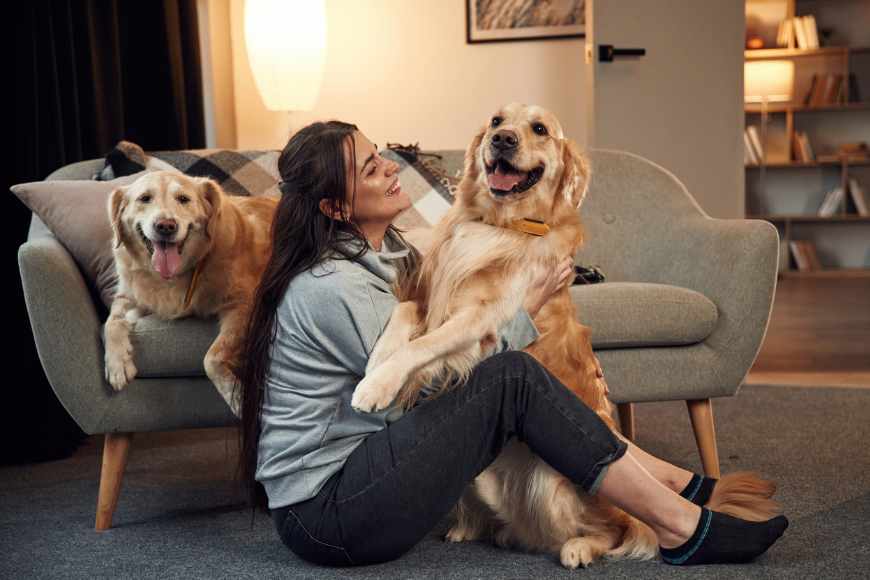
Bringing a new dog into your home can be exciting and challenging. As someone who has experience introducing a new dog to my pack, I’ve learned a lot about making the process smooth and stress-free. The key to success is taking it slow and following a step-by-step approach that respects both your current dogs and the newcomer.
I remember when I first brought home my rescue pup, Max. My other dogs were curious but wary. By using positive reinforcement and carefully managing introductions, I was able to help everyone adjust. It took time and patience, but soon, they were all playing together like old friends.
In this guide, I’ll share my tried-and-true tips for introducing a new dog to your pack. From preparing your home to handling the first meeting, I’ll cover everything you need to know to set your dogs up for a harmonious relationship.
Key Takeaways
- Introduce dogs on neutral ground and use positive reinforcement to create a calm first meeting.
- Supervise all interactions and initially provide separate spaces for the dogs to avoid conflict.
- Understand your current pack’s dynamics and adjust introductions based on their personalities and hierarchy.
- Be patient and consistent with training, using basic commands and rewarding good behavior to build positive relationships.
- Monitor for signs of stress or aggression, intervening safely and calmly when necessary to prevent conflicts.
Understanding Your Current Pack Dynamics
Before introducing a new dog to my home, I need to know how my current dogs interact. This helps me plan for a smooth introduction. I’ll look at each dog’s personality and how they relate to each other.
Assessing Your Dog’s Temperament
I start by watching how my dogs act in different situations. Are they shy or outgoing? Do they get along with other dogs at the park? I pay attention to how they react to new people and animals.
Some dogs are naturally more friendly, while others need time to warm up. I note which of my dogs might be more welcoming to a newcomer. I also think about any past issues. Has one of my dogs ever shown aggression? This helps me plan ahead and keep everyone safe.
Identifying Pack Hierarchies
Dogs often have a natural order in their group. I look for signs of who’s in charge. The leader might:
- Eat first
- Get the best sleeping spots.
- Lead on walks
I watch how my dogs play and settle disputes. Some may be more submissive, while others try to be top dog. Understanding this helps prevent dominance issues when a new dog joins. I make sure to respect the existing order and introduce changes slowly.
I also notice if any of my dogs seem stressed by their position. This could mean they need extra support when the pack changes.
Preparing for the New Arrival
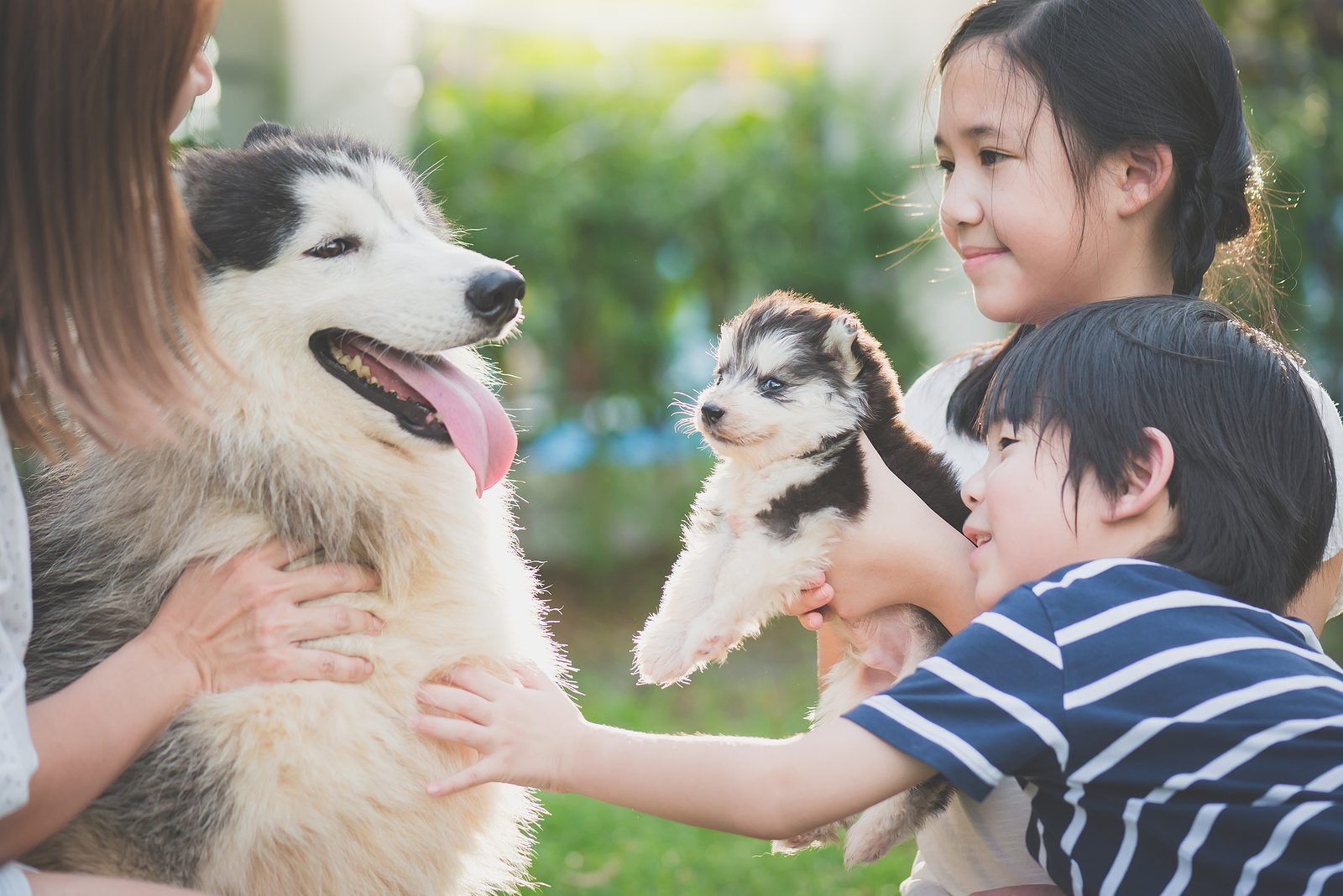
Getting ready for a new dog takes some planning. I’ll cover how introducing a new dog to your home can be a smooth process, from picking the right pup to setting up a cozy spot and gathering all the needed supplies.
Choosing the Right Dog
Picking a dog that fits your life is key. I think about my home, family, and schedule. Do I want a lazy couch potato or an active jogging buddy? Puppies need lots of time and training. Adult dogs may be calmer but could have habits to break.
I look at different breeds and mixes. Some need more exercise or grooming than others. I consider size too – big dogs need more space and food. Meeting dogs in person helps me see their real personality. I visit shelters or talk to breeders. I ask about health, behavior, and care needs.
Setting Up a Safe Space
I create a comfy spot for my new dog to feel secure. A quiet corner works well. I put a soft bed there and maybe a crate if I’ll use one. To ensure a safe environment for my new dog, I prioritize dog-proofed the area.
I remove valuable or dangerous items like electrical cords, plants, and small objects. Rooms that aren’t dog-friendly are closed off, and baby gates are perfect for this. For added safety, a pen can create a secure play area while keeping the dog out of restricted spaces.
Gathering Necessary Supplies
I stock up on essentials before bringing my new dog home. Here’s what I get:
- Food and water bowls
- Collar with ID tag
- Leash
- Dog food
- Treats for training
- Toys for play and chewing
- Brush and nail clippers
- Cleaning supplies for accidents
I also buy a few extras:
- Poop bags for walks
- A bed or crate
- Puppy pads, if needed
Additionally, I always keep my vet’s number handy and schedule a checkup soon after introducing my new dog to the home.
The First Introduction
Bringing a new dog to meet your existing pets is an exciting but delicate process. I’ve found that introducing a new dog requires careful planning and close observation to ensure a smooth first meeting.
Neutral Territory Meetings
I always recommend introducing dogs on neutral ground. This helps prevent territorial behavior. A quiet park or open space works well.
I make sure both dogs are on leashes, held by separate people. We start with the dogs at a distance, allowing them to see each other without direct interaction.
Gradually, I guide the handlers to walk the dogs parallel to each other. This lets them get used to the other’s presence without feeling pressured.
Reading Body Language
I pay close attention to how the dogs react. Relaxed, wiggly body language is a good sign. Some positive signals I look for:
- Loose, wagging tails
- Playful bows
- Relaxed ears and mouths
Warning signs include:
- Stiff postures
- Raised hackles
- Growling or snarling
If I see any stress signals, I increase the distance between the dogs. It’s important not to rush things.
Managing the First Interaction
When both dogs seem calm, I allow them to approach each other. I keep the leashes loose to avoid creating tension. I encourage brief sniffing, then call the dogs away. Short, positive interactions work best at first.
I watch for any signs of aggression or fear. If either dog seems uncomfortable, I end the meeting on a good note. Multiple short meetings over several days often work better than one long session. This gives the dogs time to process and adjust.
The Three-Day Rule: Helping Your New Dog Settle In
The ‘three-day rule’ when acclimating a new dog involves allowing the dog three days to decompress. During this period, it’s important to keep things calm and quiet, avoiding introductions to many people or new situations. This time gives the dog an opportunity to adjust to their new environment, helping to reduce stress and anxiety.
Check out this video on how to introduce a new puppy to your home.
By: Nate Schoemer
Home Integration Process
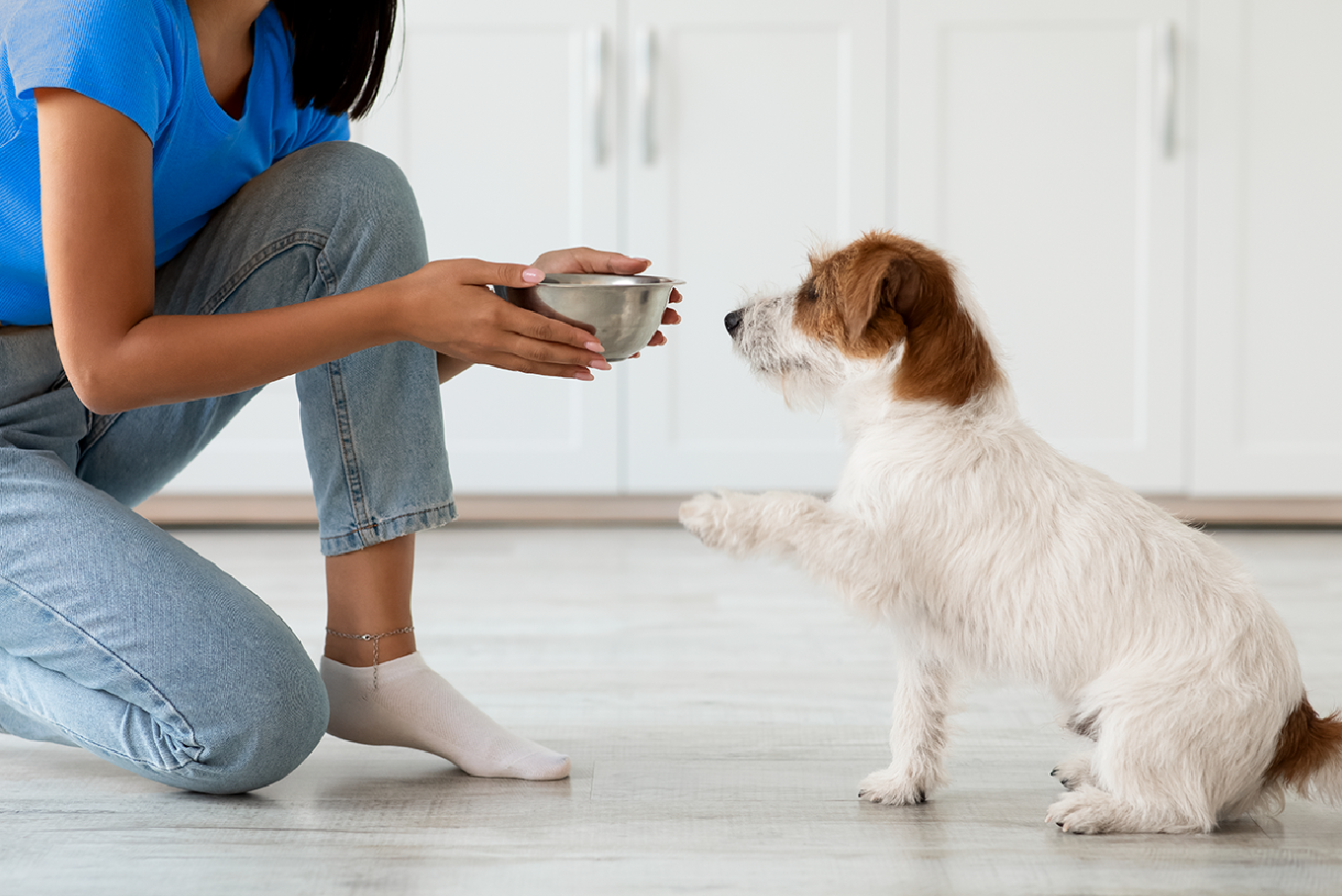
Bringing a new dog home requires a thoughtful approach. When introducing a new dog to your home, it’s essential to take key steps to help your new pup settle in smoothly and become part of the family. I’ll share some of the most effective methods that have worked for me, ensuring that the transition is as seamless as possible.
Structured Home Entry
I always make sure to enter my home first when bringing in a new dog. This sets the tone and shows the dog I’m the pack leader. I keep the leash on at first, guiding the dog calmly through each room.
I let the new pups explore at their own pace. Sniffing around helps them get familiar with their new space. I make sure to point out their bed, water bowl, and potty area.
I keep initial tours short to avoid overwhelming the dog. We take breaks outside for potty and play. This helps create positive associations with the new home.
Feedings and Treats
I stick to a regular feeding schedule right from the start. This helps the new dog feel secure and understand the household routine. I first fed my new dog separately from other pets. This prevents any food-related conflicts. I use this time to bond with the new addition.
Treats are great for training, but I’m careful not to overdo it. I use small, healthy treats for rewards. This helps reinforce good behavior without upsetting their diet. I make sure all family members follow the same feeding rules. Consistency is key in helping the new dog settle in and feel part of the pack.
Establishing Boundaries and Rules
I set clear rules from day one. This includes where the dog can and can’t go in the house. I first use baby gates or closed doors to block off-limits areas.
I teach basic commands like “sit” and “stay” right away. This helps the dog understand what I expect from them. I use positive reinforcement and praise good behavior.
I make sure everyone in the family follows the same rules. This prevents confusion for the new dog. We all use the same commands and reward system. I’m patient but consistent. It takes time for a new dog to learn the ropes. I gently correct mistakes and always end training sessions on a positive note.
Building Positive Relationships
I’ve found that building strong bonds between dogs takes time and effort, especially when introducing a new dog to the family. The key is to create a positive environment where all dogs feel safe and happy. Let’s look at some important steps to make this happen.
Supervised Interactions
When I bring a new dog home, I always keep a close eye on how they interact with my other dogs. Positive reinforcement is key during these early meetings. I praise good behavior and offer treats when they’re calm around each other.
I start with short, controlled meetings in a neutral space. This could be the backyard or a nearby park. I keep the dogs on leashes at first so I can easily control the situation.
As they get more comfortable, I slowly increase the time they spend together. I watch for signs of stress or aggression. If I see any issues, I separate them and try again later.
Encouraging Playtime
Once the dogs are more relaxed around each other, I start to encourage play. I use toys that are new to all the dogs to avoid jealousy over old favorites.
I supervise playtime closely. If play gets too rough, I calmly interrupt and redirect their attention. I make sure each dog has a chance to rest if they seem tired.
Short, positive training sessions can be a great way for the dogs to bond. I teach them to sit or lie down together. This helps them learn to focus and stay calm in each other’s presence.
Enforcing Calm Behavior
I’ve learned that a peaceful home starts with calm dogs. I reward quiet, relaxed behavior with treats and praise. This helps all the dogs understand what I expect from them. I make sure each dog has their own safe space, like a crate or bed.
When things get too exciting, I guide them to these areas for some quiet time. I stick to a consistent routine for meals, walks, and playtime.
This helps reduce stress and competition between the dogs. I remove any toys or objects that might cause fights, at least until they’re more comfortable with each other.
Training and Obedience
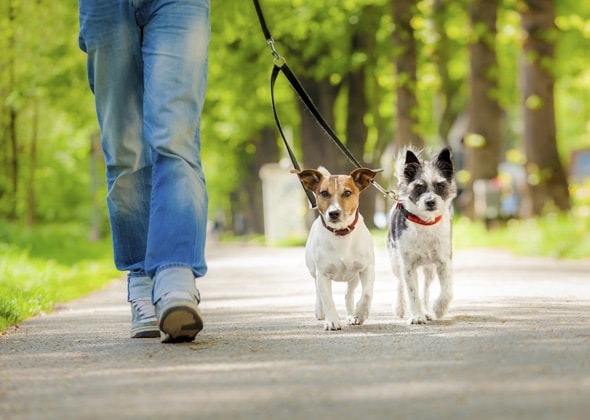
Training and obedience are key when introducing a new dog into your pack. I’ve found that teaching basic commands, going on pack walks, and being consistent with reinforcement help create a harmonious multi-dog household.
Basic Commands and Cues
I always start with simple commands like “sit,” “stay,” “come,” and “leave it.” These are crucial for safety and communication. I keep training sessions short and positive. Here are some tips I use:
- Use clear, one-word commands
- Reward with treats and praise
- Practice in different locations
- Gradually increase difficulty
Dogs learn best through repetition and positive reinforcement. So, I make sure to practice commands daily, even if just for a few minutes.
Pack Walks and Exercise
I’ve found that pack walks are great for bonding and establishing a hierarchy. I always start with separate walks and then gradually bring the dogs together. My pack walk routine:
- Walk dogs separately at first
- Introduce parallel walking
- Gradually decrease the distance between dogs
- Allow brief greetings if all is calm
- End walks on a positive note
I make sure all dogs get enough exercise. This helps reduce tension and promotes better behavior at home.
Consistent Reinforcement
I’ve learned that consistency is key when training multiple dogs. I use the same commands and rules for all dogs in the pack. This helps prevent confusion and establishes clear expectations. Some ways I stay consistent:
- Use the same words for commands
- Enforce rules equally for all dogs.
- Reward good behavior consistently.
- Correct unwanted behavior promptly
I involve all family members in training. This ensures everyone uses the same approach. I’ve found that patience is crucial during this process. It takes time for dogs to learn and adjust to new routines.
Monitoring and Resolving Conflicts
Keeping an eye on how dogs interact is key when introducing a new dog into your home. I’ll show you how to spot problems early and keep everyone happy.
Recognizing Signs of Dispute
I always watch for subtle signs of trouble between dogs. Growling, showing teeth, or hair standing up are clear warnings. But I also look for less obvious cues like stiff body language, hard stares, or one dog always moving away from another.
Lip licking, yawning, or avoiding eye contact can mean a dog feels stressed. I pay attention to changes in eating habits or playtime, too. These can hint at growing tension in the pack.
Safe Intervention Techniques
When I see a fight brewing, I stay calm. Yelling often makes things worse. Instead, I use a firm, steady voice to get their attention. Sometimes, I clap my hands or make a sudden noise to break their focus. If it’s safe, I’ll step between the dogs or use a barrier like a chair.
Never grab collars or put my hands near their mouths. I might toss a blanket over them or spray water to separate them safely. After a spat, I give each dog a timeout in different rooms to cool off.
Maintaining Pack Harmony
I make sure each dog gets one-on-one time with me every day. This helps them feel secure. Positive reinforcement is a big part of my approach. I reward good behavior with treats and praise.
I keep meal times and walks on a set schedule. This routine helps reduce stress. I also make sure there are enough toys and comfy spots for everyone.
I keep the dogs in separate areas when I can’t watch them. This prevents fights when I’m not there to step in. Regular exercise for all dogs helps burn off extra energy that might lead to fights.
Health and Safety Considerations
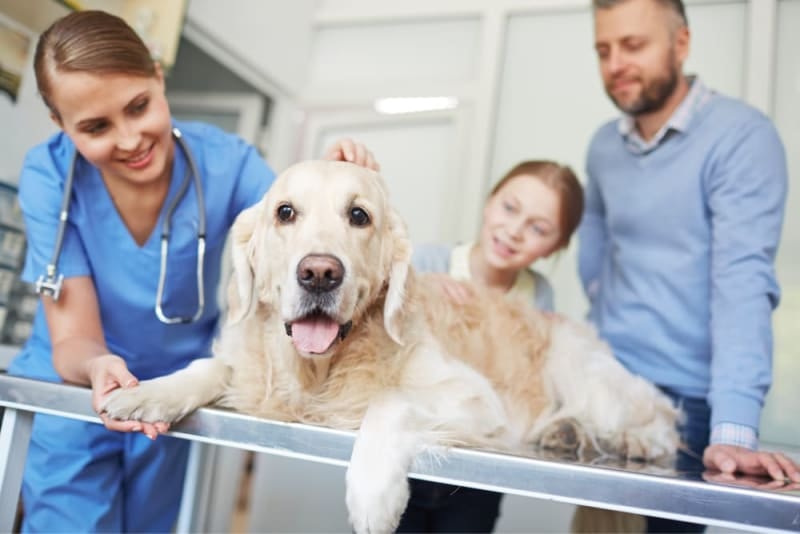
When introducing a new dog into your pack, keeping everyone healthy and safe is my top priority. I always cover key health checks, consider spay/neuter status, and prepare for potential emergencies.
Vaccinations and Health Checks
Before introducing a new dog, I take them to the vet for a full checkup. This helps catch any health issues early. I make sure they’re up-to-date on core vaccines like:
- Rabies
- Distemper
- Parvovirus
- Hepatitis
I also check for parasites like fleas, ticks, and worms. A clean bill of health protects both the new dog and my existing pack. I keep records of all health checks and shots. This makes future vet visits easier. It’s also helpful if I need to board the dogs or take them to a groomer.
Spay/Neuter Implications
I always consider the spay/neuter status of both my new and existing dogs. This can affect their behavior and interactions. Intact dogs may be more likely to show aggression or territorial behavior. Spayed or neutered dogs are often calmer and easier to introduce.
If I bring in an intact dog, I watch closely for signs of tension. I might keep them separate from my other dogs during certain times, like when a female is in heat. I talk to my vet about the best time to spay or neuter a new dog. This depends on their age, breed, and health status.
Dealing With Medical Emergencies
I always prepare for the unexpected. Here’s what I keep on hand:
- First aid kit for dogs
- Emergency vet contact info
- Basic pet first aid knowledge
I learn how to spot signs of common emergencies like:
- Heatstroke
- Choking
- Poisoning
- Injuries from fights
I keep my dogs’ medical records easily accessible. This helps if I need to rush to an emergency vet. I also make sure my existing dogs are comfortable with being handled. This makes it easier to check for injuries or give medication if needed.
Long-Term Success and Adjustment
Getting your new dog to fit in takes time and effort. I’ve learned that introducing a new dog with patience and watching how things change is key. Here are some tips to help your pack thrive long-term.
Routine and Consistency
I make sure to keep a steady routine for all my dogs. This means feeding, walks, and playtime happen simultaneously each day. It helps my new dog feel secure and lets the other dogs know what to expect.
I use the same rules and commands for all my dogs. This stops confusion and helps my new pup learn faster. I praise good behavior right away to build good habits. I also give each dog some one-on-one time every day. This keeps them happy and helps me spot any issues early on.
Evaluating Pack Dynamics Over Time
I always keep an eye on how my dogs interact. At first, I watch for any signs of stress or fights. As time goes on, I look for positive changes in their bonds. I note if they start to play together or share toys. These are great signs that they’re getting along well.
If I see one dog always giving in to another, I step in to balance things. I make sure each dog has their own safe space to retreat to if needed.
When to Seek Professional Help
Sometimes, despite my best efforts, problems come up that I can’t fix alone. If I see ongoing aggression or fear that doesn’t improve, I know it’s time to call in an expert.
I also reach out for help if one dog seems very stressed or unhappy for a long time. A dog behaviorist can spot issues I might miss and give me tailored advice. I don’t wait too long to get help if I need it. Early intervention can often solve problems before they get bigger.
Watch this video on how to introduce your new puppy to other dogs.
By: Sara Ondrak
From Chaos to Harmony: My Experience with Introducing a New Dog
Introducing a new dog to my home has always been a rewarding journey, but it requires careful planning. Over time, I’ve learned the importance of patience, preparation, and being mindful of my existing dogs’ personalities. Each dog is unique, and understanding their temperament and adjusting to their new family dynamics is essential. Taking the time to introduce everyone properly, establish clear boundaries, and keep a positive, calm environment has made all the difference in ensuring a smooth transition.
Through my experiences, I’ve found that creating a calm, structured environment helps all dogs feel safe and secure. It’s not always easy, but with consistency, positive reinforcement, and a thoughtful approach, I’ve successfully introduced new dogs into my pack. The bond between my dogs and I grows stronger with each step. With the right mindset and preparation, I’m confident anyone can make the transition enjoyable for their new dog and their existing pets.
Frequently Asked Questions
Introducing a new dog to your pack can be tricky. I’ve learned some key strategies through my experiences that help make the process smoother. Here are answers to some common questions about bringing a new pup into the family.
How Can You Introduce a New Dog to a Home Already Having a Dog?
I always start slowly when bringing a new dog home. First, I let the dogs meet on neutral ground outside the house. I keep them on leashes and watch their body language closely.
If things go well, I bring them inside but separate them first. I use baby gates to create safe spaces for each dog. This lets them see and smell each other without direct contact.
What Are Effective Strategies When Introducing a Puppy to a Dominant Dog?
When introducing a puppy and a dominant dog, supervision is key. At first, I never leave them alone together, ensuring the puppy has a safe space to retreat if needed. To prevent jealousy, I make sure the older dog receives plenty of attention and treats. During introductions, I focus on praising the calm behavior of both dogs, helping foster a peaceful relationship.
What Steps Should Be Taken if One Dog is Aggressive During Introductions?
If I notice aggression, I immediately separate the dogs. I don’t punish the aggressive dog, which can worsen things. Instead, I go back a step in the introduction process. I might consult a professional trainer for help. They can provide tips for managing the situation safely.
How Much Time is Typically Needed for a Dog Pack to Accept a New Member?
In my experience, dogs usually take about 2-4 weeks to fully adjust. But every situation is different. Some dogs click right away, while others need more time. I stay patient and don’t rush the process. I watch for signs that the dogs are getting along better over time.
Are There Common Mistakes to Avoid When Introducing Dogs to Each Other?
One mistake I’ve learned to avoid is forcing interactions. I never push dogs together if they’re not ready. This can lead to fights or fear. Another error is ignoring subtle signs of stress. I watch for yawning, lip licking, or looking away. These can indicate a dog is uncomfortable.
Paw-some Fun Awaits – Join Us!
Jump into a world filled with wagging tails and joyful paws! Discover:
- Facebook for community vibes and stories.
- Instagram for adorable dog moments.
- Pinterest for creative dog-friendly ideas.
- X for quick tips and updates.
- YouTube for entertaining videos and product reviews.
Join fellow dog lovers and connect with furry friends today!
